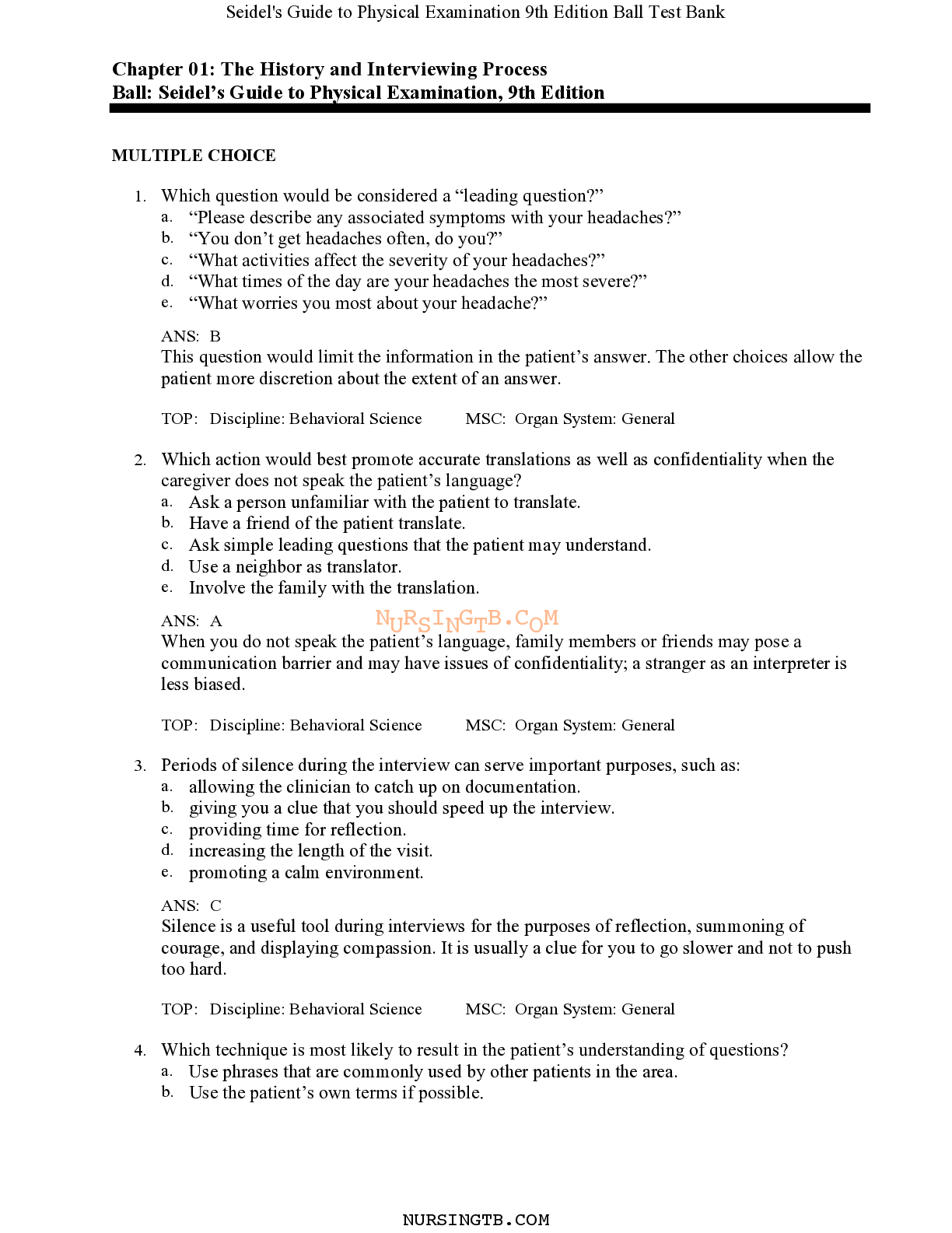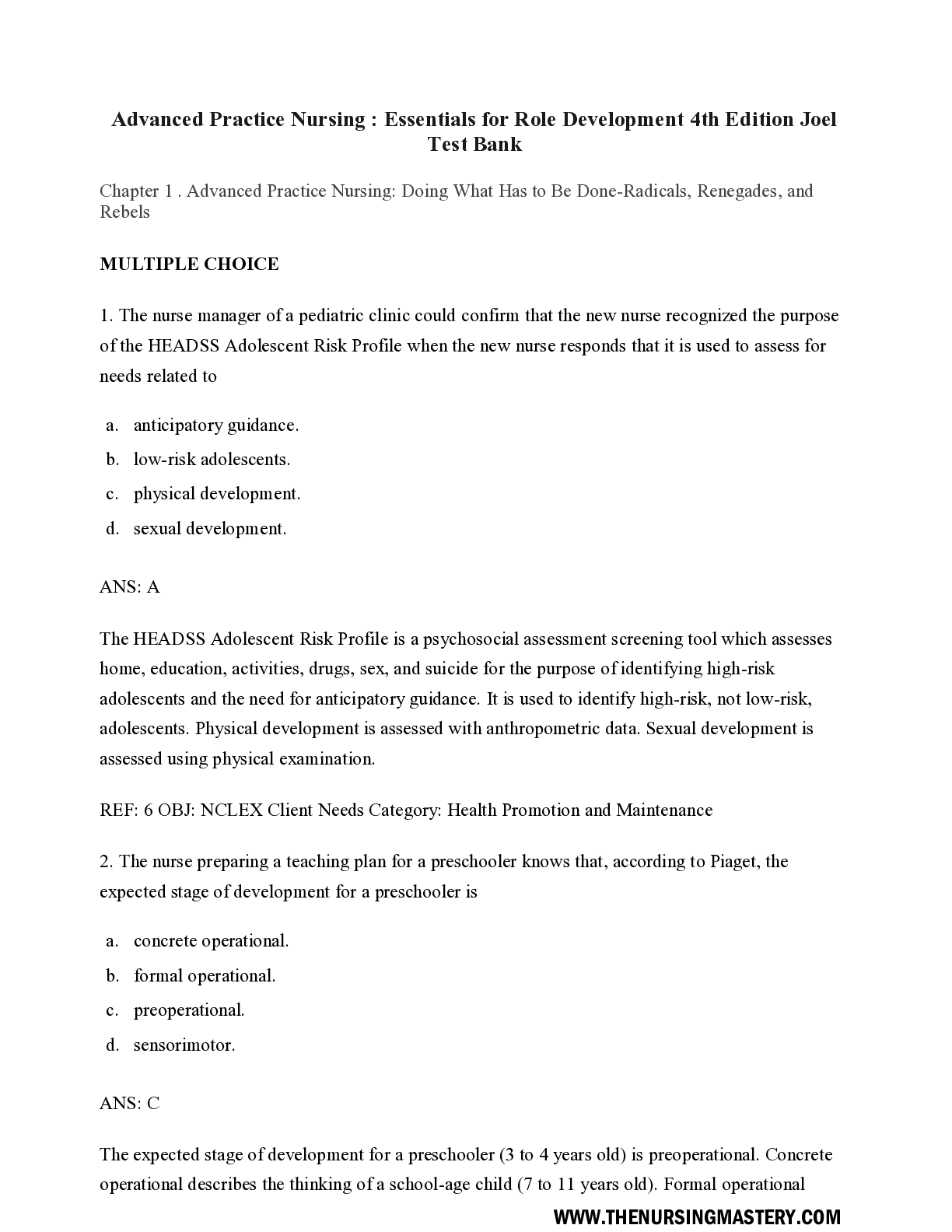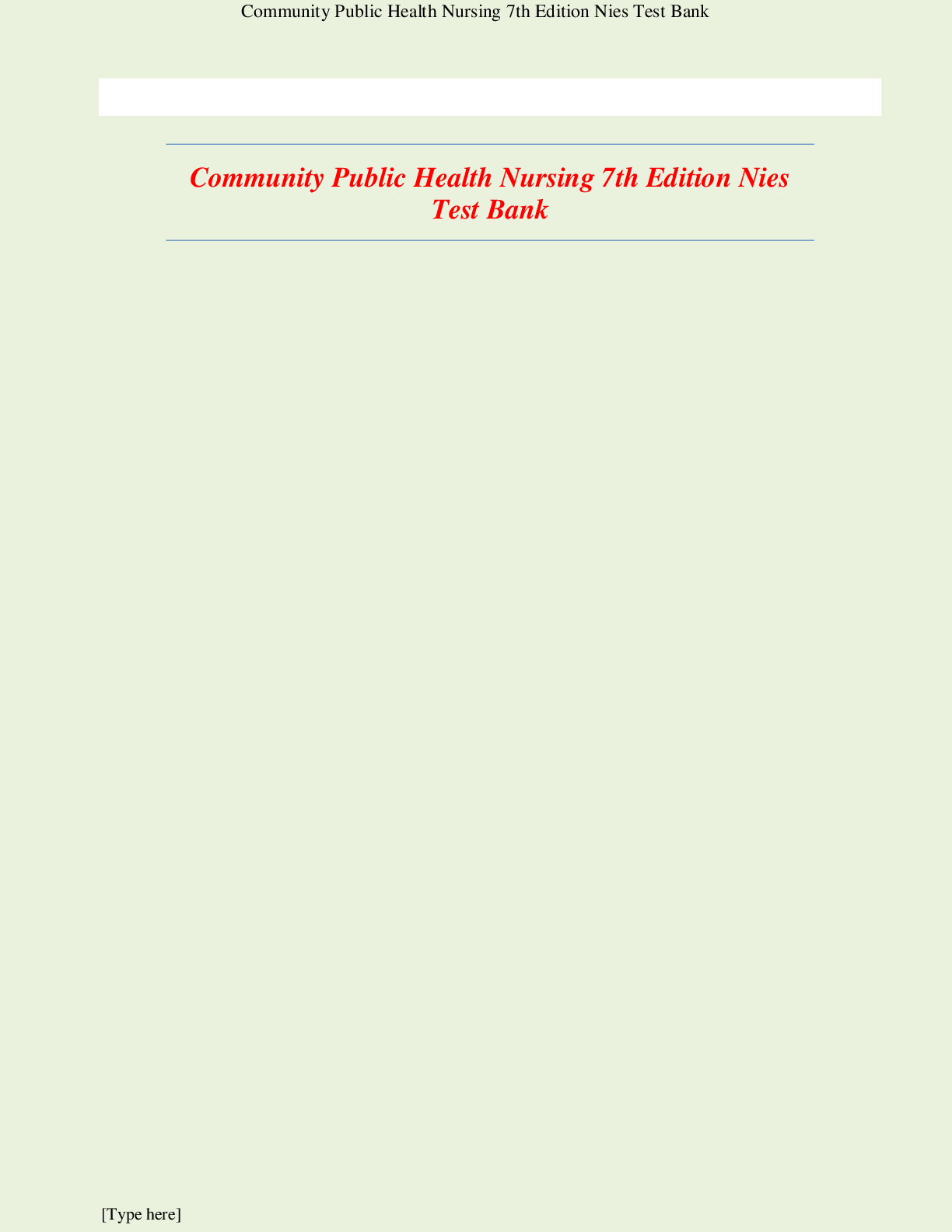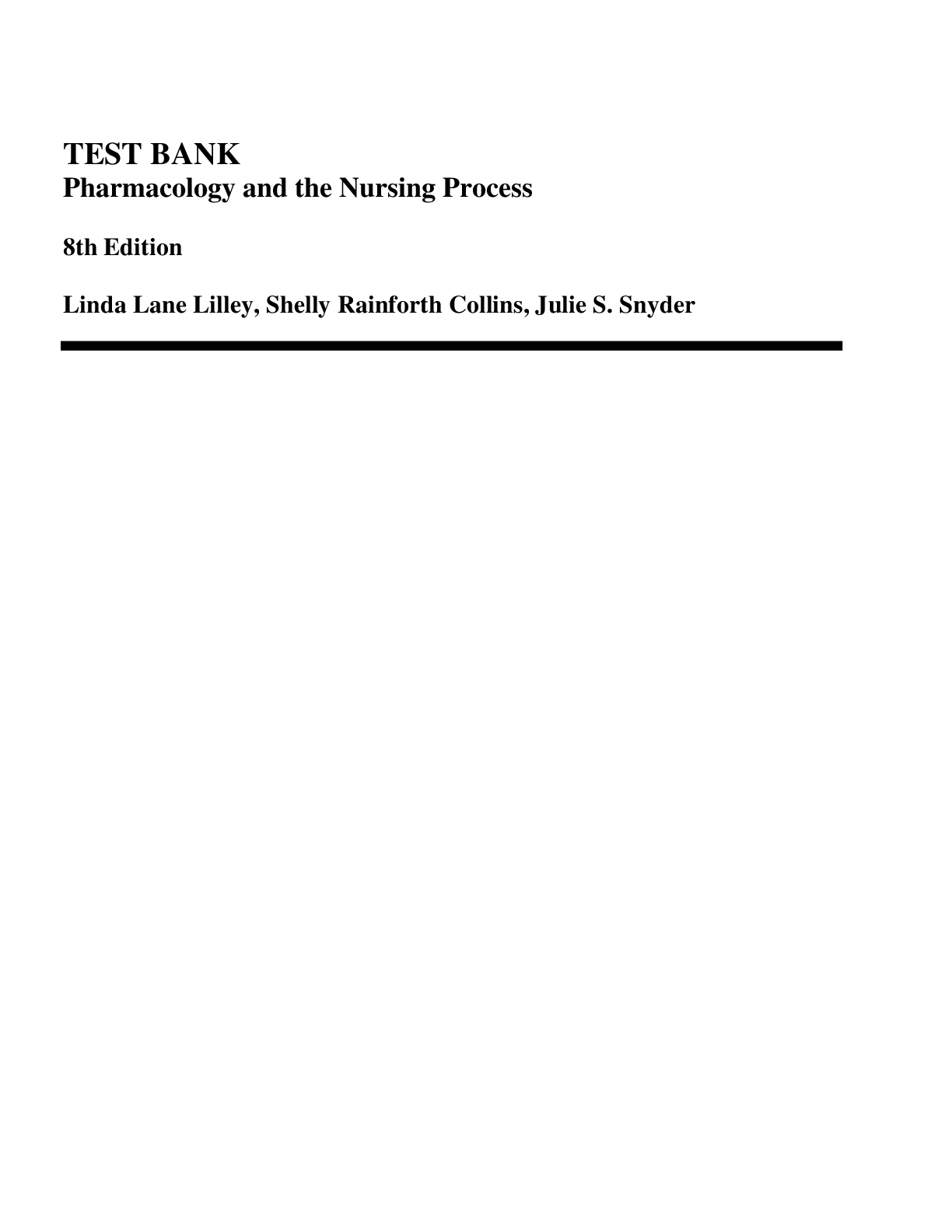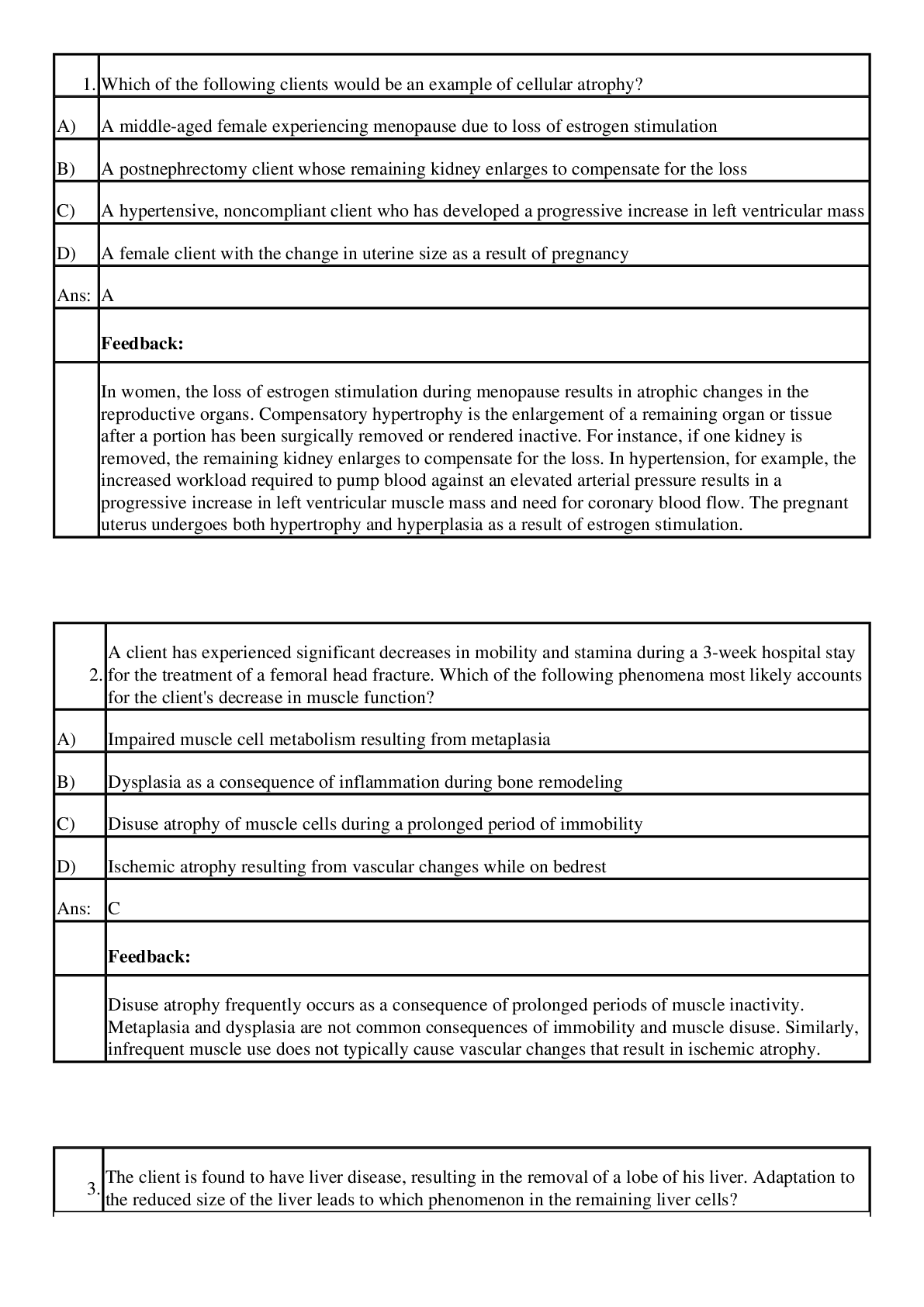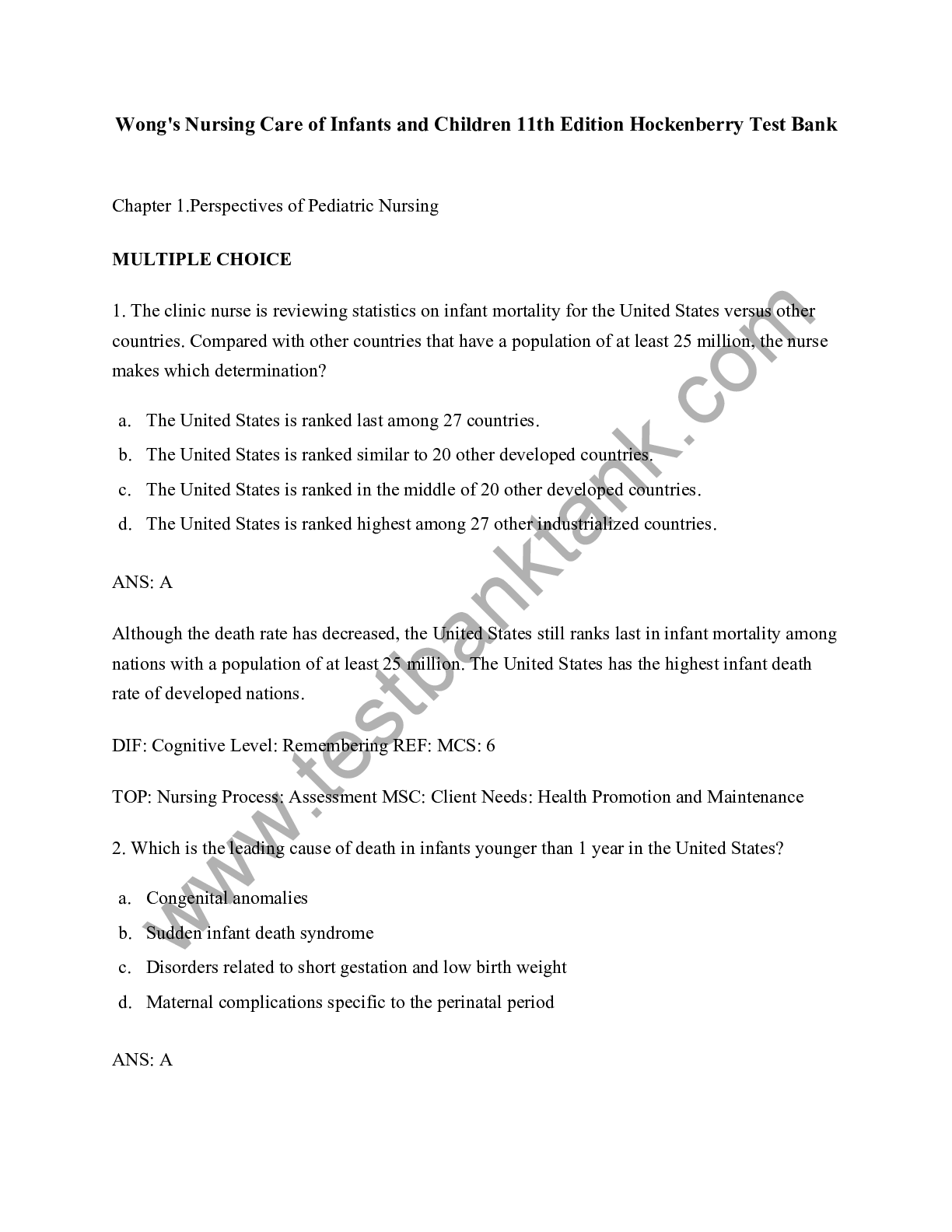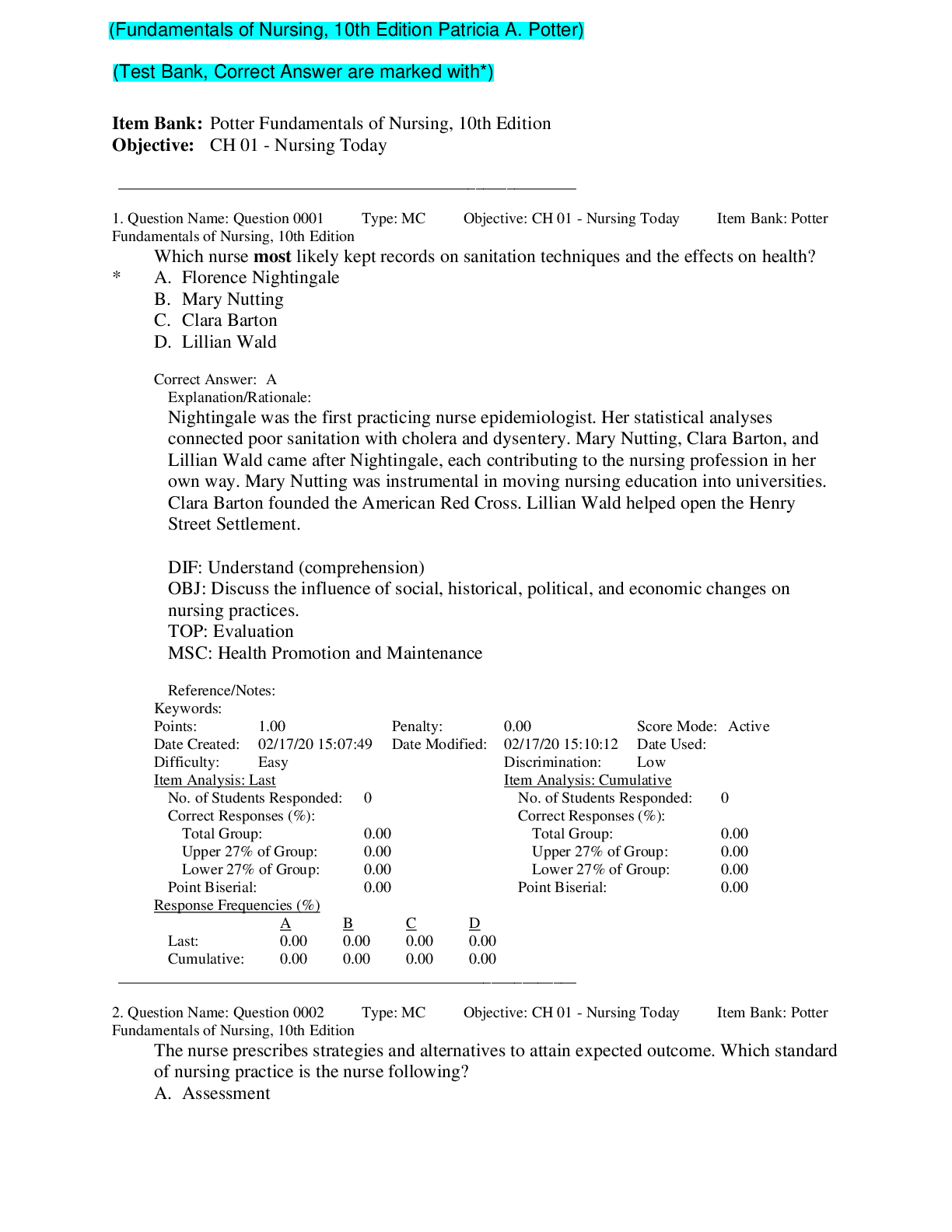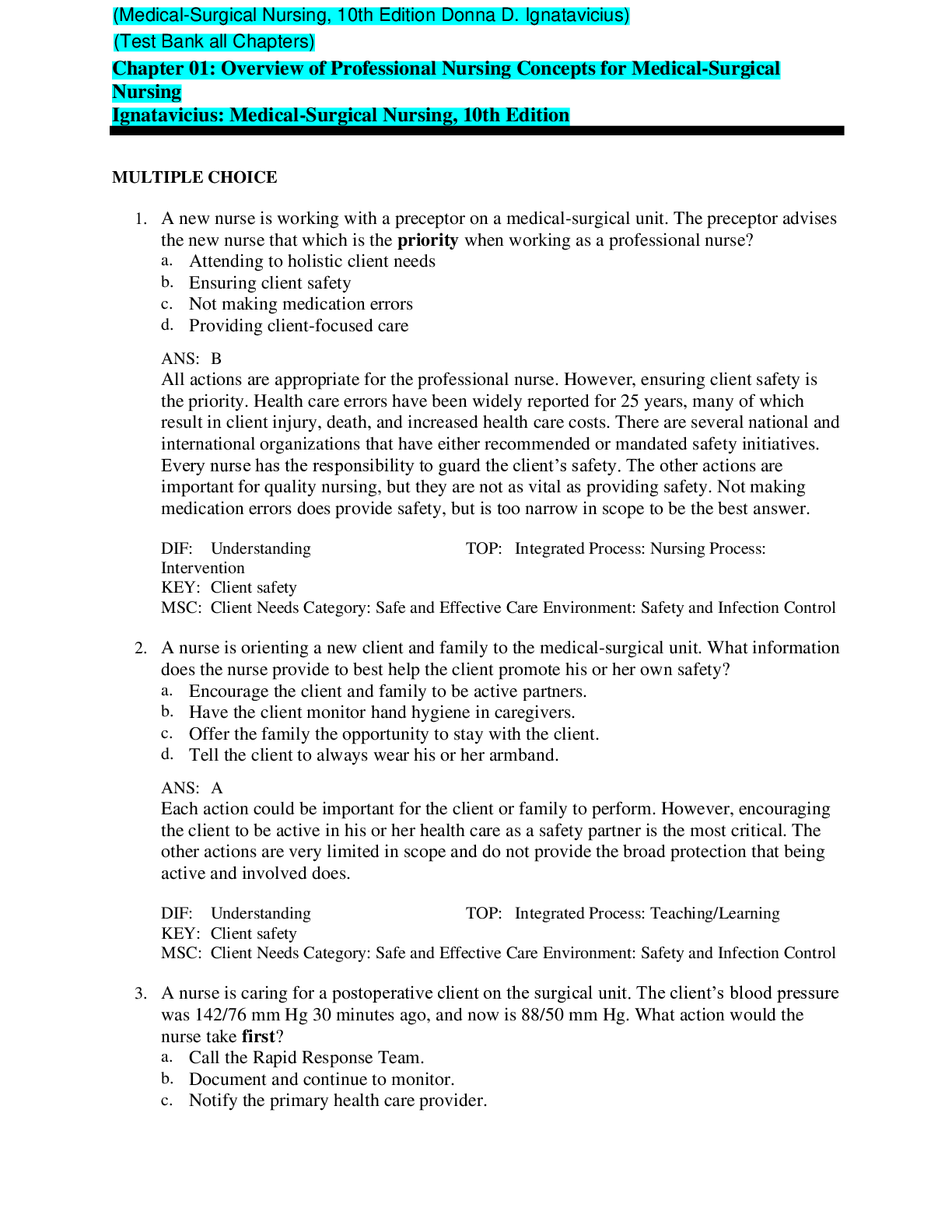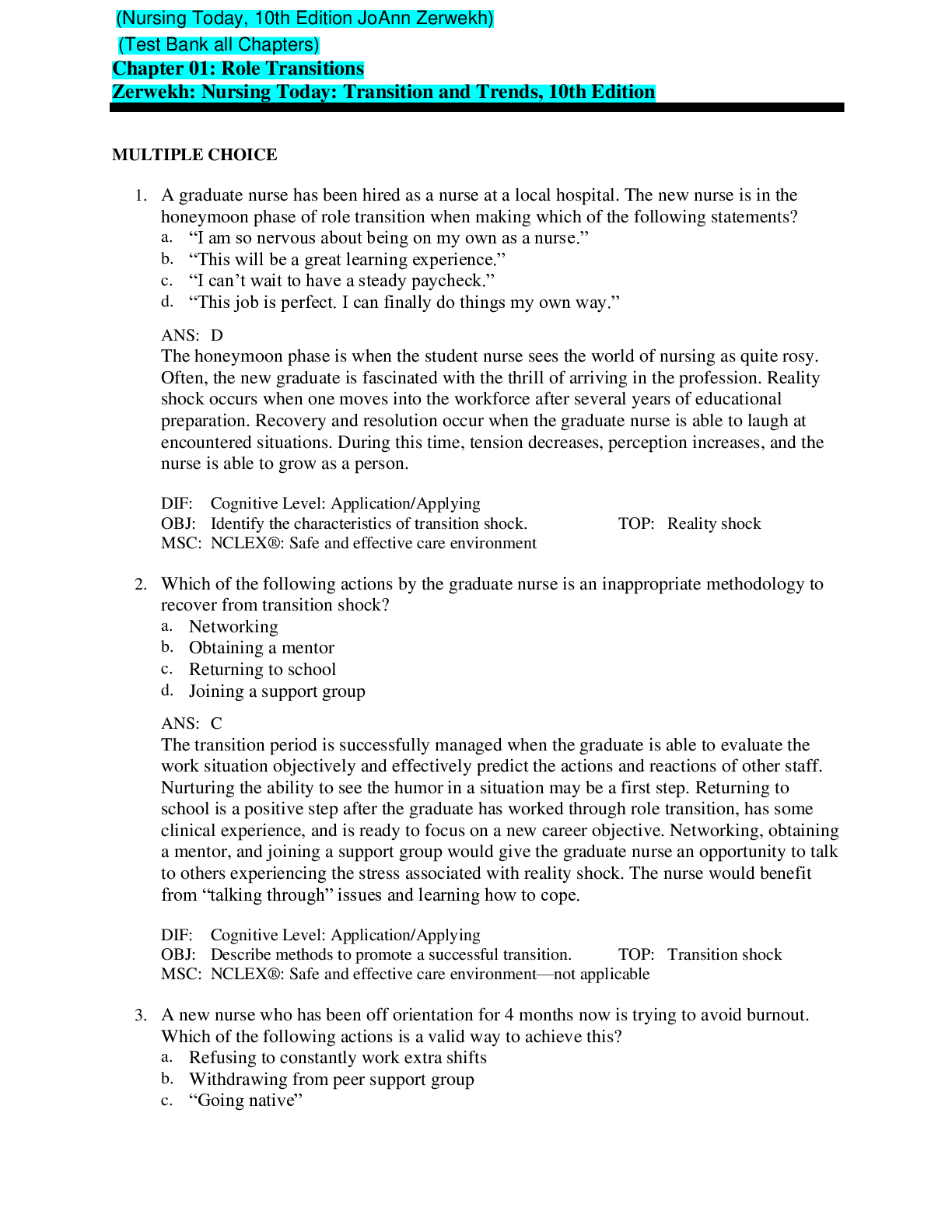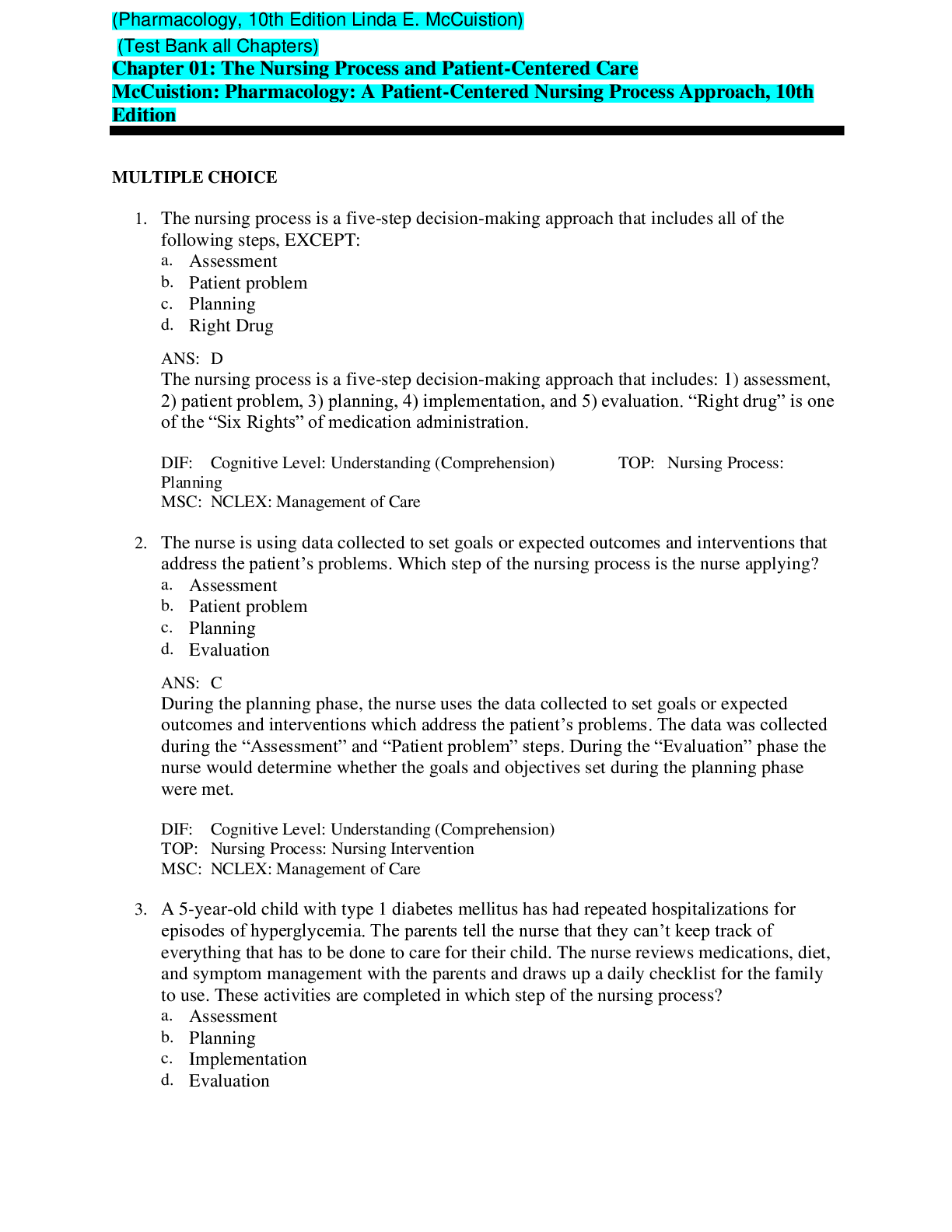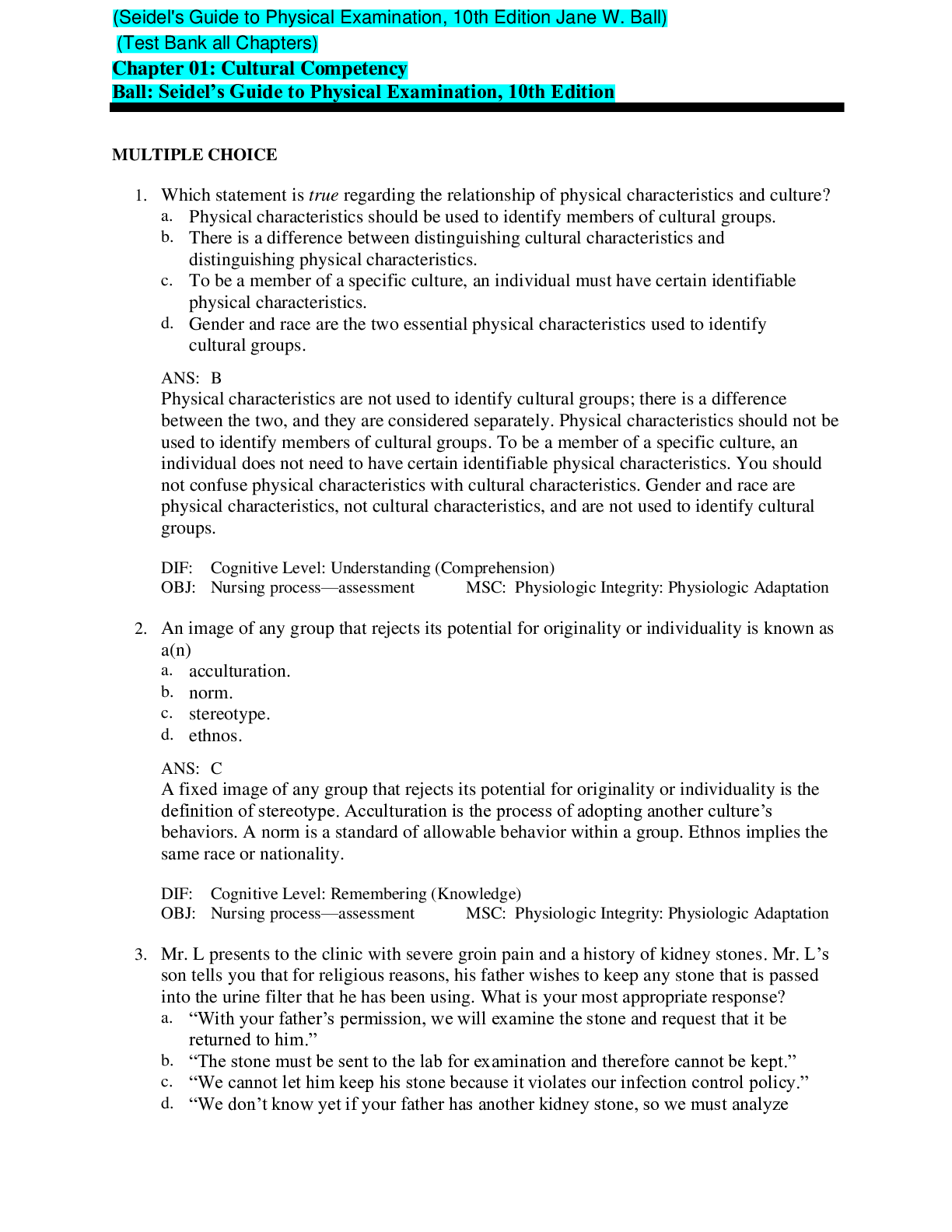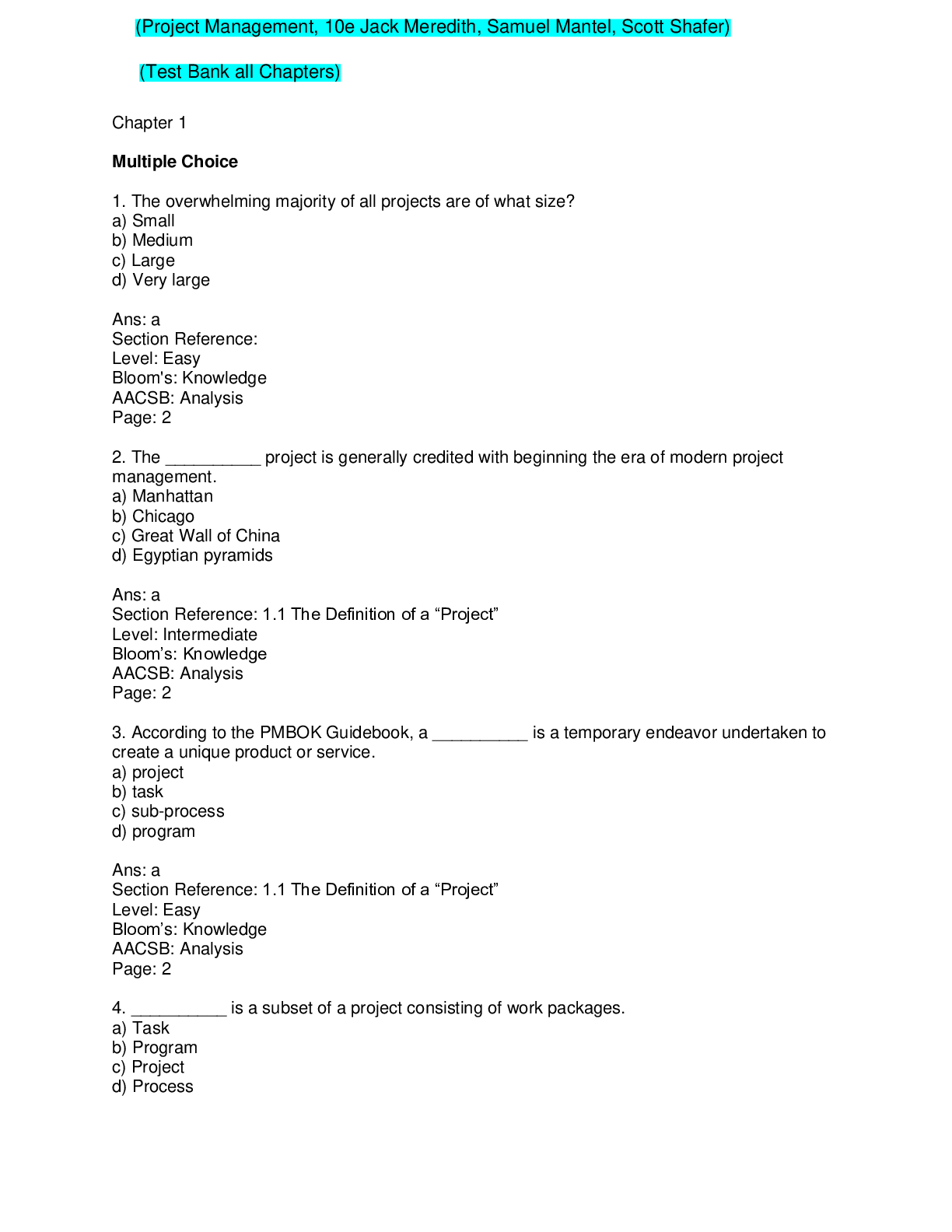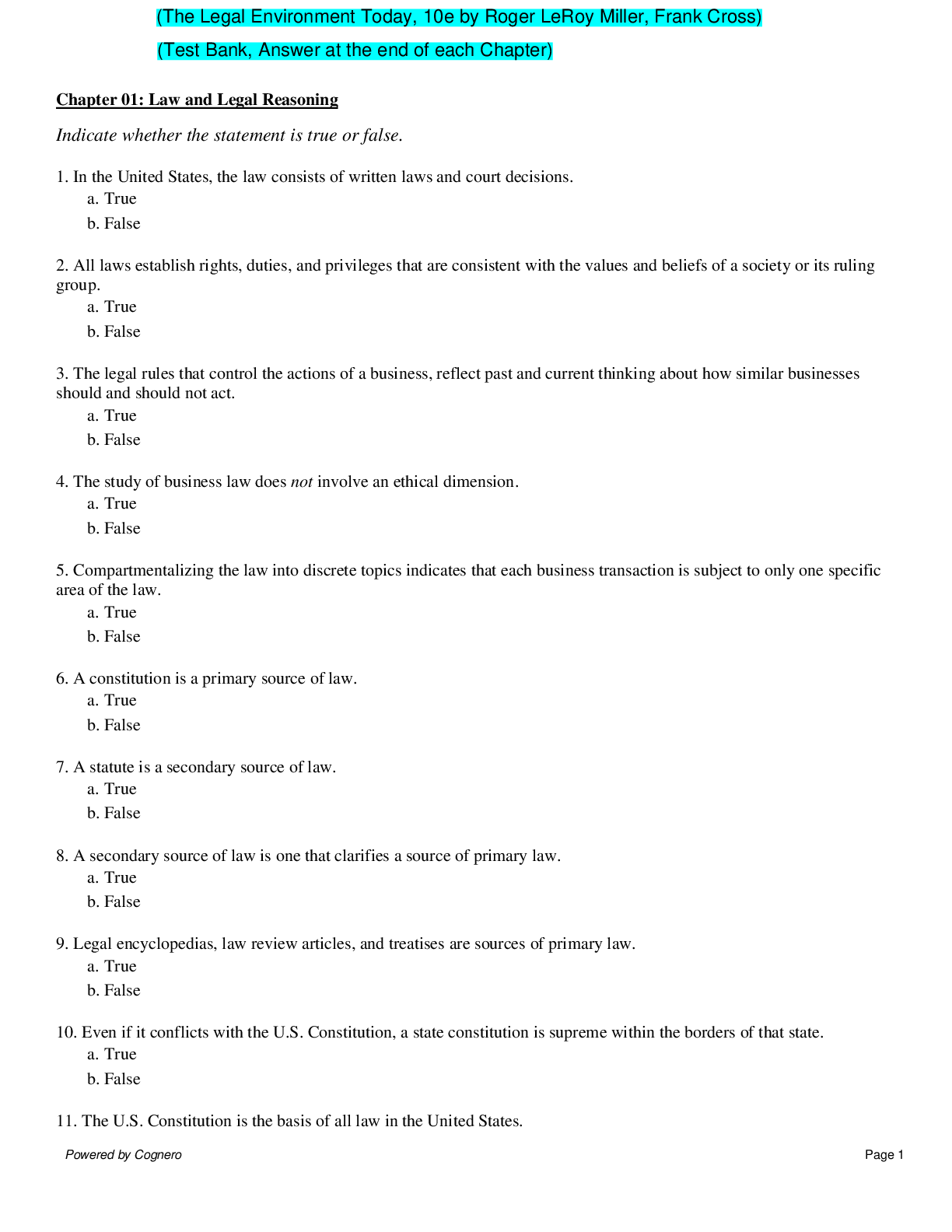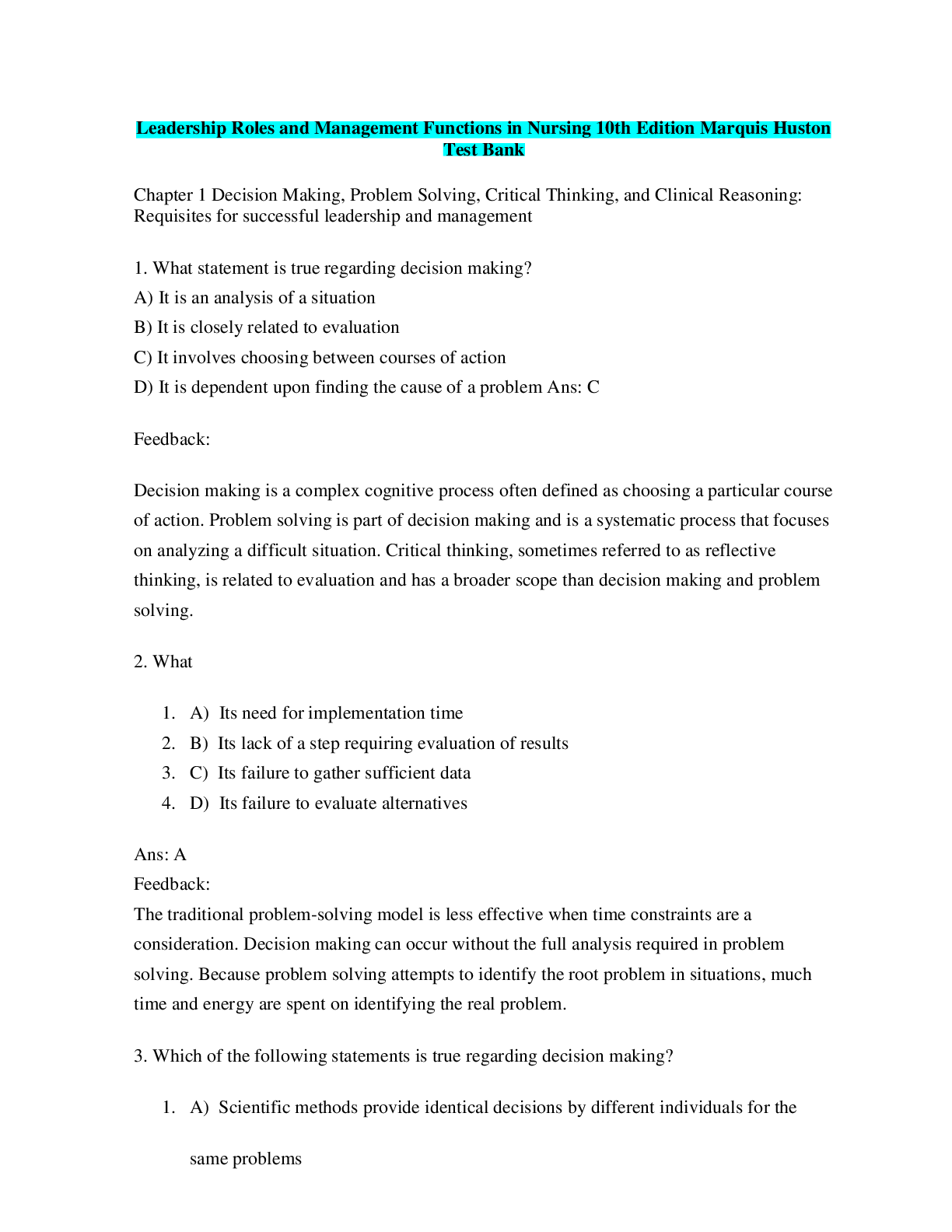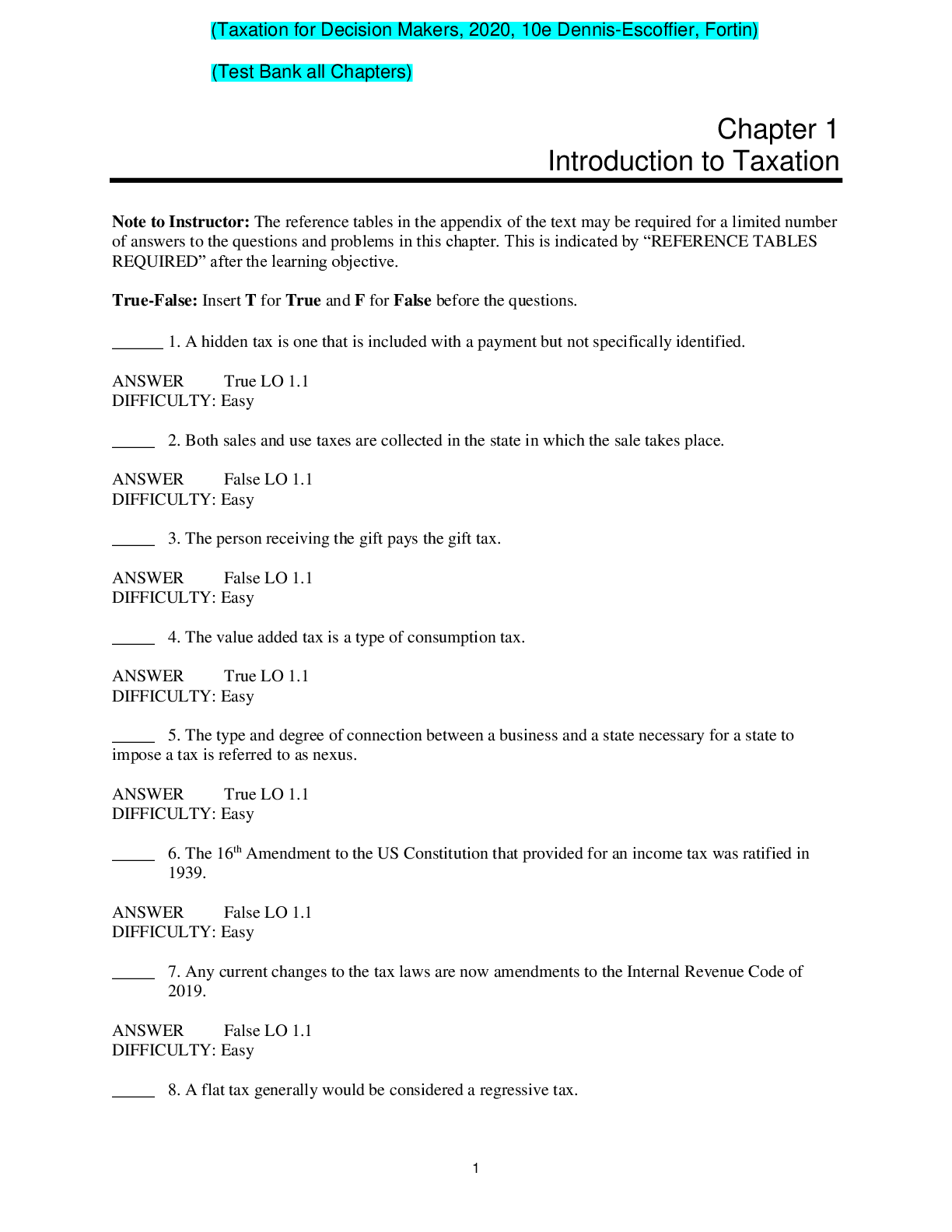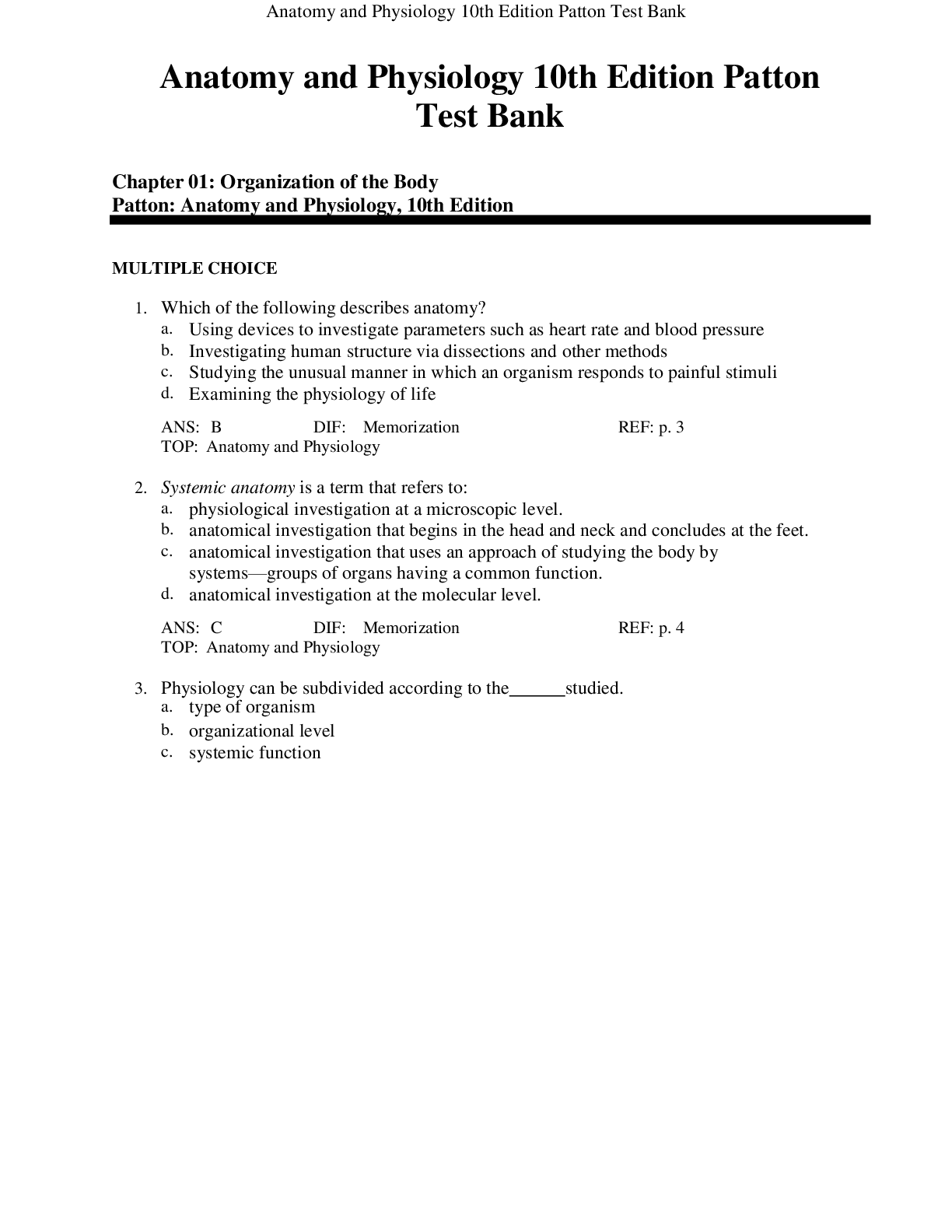Health Care > TEST BANK > TEST BANK FOR CLINICAL NURSING SKILLS AND TECHNIQUES 10TH EDITION BY ANNE GRIFFIN PERRY, PATRICIA A. (All)
TEST BANK FOR CLINICAL NURSING SKILLS AND TECHNIQUES 10TH EDITION BY ANNE GRIFFIN PERRY, PATRICIA A. POTTER CHAPTER 1-43 COMPLETE GUIDE
Document Content and Description Below
TEST BANK FOR CLINICAL NURSING SKILLS AND TECHNIQUES 10TH EDITION BY ANNE GRIFFIN PERRY, PATRICIA A. POTTER CHAPTER 1-43 COMPLETE GUIDE.Table Of Content Chapter 1. Using Evidence in Nursing Practice ... Chapter 2. Communication and Collaboration Chapter 3. Admitting, Transfer, and Discharge Chapter 4. Documentation and Informatics Chapter 5. Vital Signs Chapter 6. Health Assessment Chapter 7. Specimen Collection Chapter 8. Diagnostic Procedures Chapter 9. Medical Asepsis Chapter 10. Sterile Technique Chapter 11. Safe Patient Handling and Mobility (SPHM) Chapter 12. Exercise and Mobility Chapter 13. Support Surfaces and Special Beds Chapter 14. Patient Safety Chapter 15. Disaster Preparedness Chapter 16. Pain Management Chapter 17. End-of-Life Care Chapter 18. Personal Hygiene and Bed Making Chapter 19. Care of the Eye and Ear Chapter 20. Safe Medication Preparation Chapter 21. Nonparenteral Medications Chapter 22. Parenteral Medications Chapter 23. Oxygen Therapy Chapter 24. Performing Chest Physiotherapy Chapter 25. Airway Management Chapter 26. Cardiac Care Chapter 27. Closed Chest Drainage Systems Chapter 28. Emergency Measures for Life Support Chapter 29. Intravenous and Vascular Access Therapy Chapter 30. Blood Therapy Chapter 31. Oral Nutrition Chapter 32. Enteral Nutrition Chapter 33. Parenteral Nutrition Chapter 34. Urinary Elimination Chapter 35. Bowel Elimination and Gastric Intubation Chapter 36. Ostomy Care Chapter 37. Preoperative and Postoperative Care Chapter 38. Intraoperative Care Chapter 39. Wound Care and Irrigations Chapter 40. Impaired Skin Integrity Prevention and Care Chapter 41. Dressings, Bandages, and Binders Chapter 42. Home Care Safety Chapter 43. Home Care Teaching Chapter 01: Using Evidence in Nursing Practice Perry et al.: Clinical Nursing Skills & Techniques, 10th Edition MULTIPLEMULTIPLECHOICECHOICE Evidence-based practice is a problem-solving approach to making decisions about patient care that is grounded in: the latest information found in textbooks. systematically conducted research studies. tradition in clinical practice. quality improvement and risk-management data. ANS: B The best evidence comes from well-designed, systematically conducted research studies described in scientific journals. Portions of a textbook often become outdated by the time it is published. Many health care settings do not have a process to help staff adopt new evidence in practice, and nurses in practice settings lack easy access to risk-management data, relying instead on tradition or convenience. Some sources of evidence do not originate from research. These include quality improvement and risk-management data; infection control data; retrospective or concurrent chart reviews; and clinicians‘ expertise. Although non–research-based evidence is often very valuable, it is important that you learn to rely more on research-based evidence. DIF: CognitiveLevel: Comprehension OBJ: Discuss the benefits of evidence-based practice. TOP: Evidence-Based Practice KEY: Nursing Process Step: Assessment MSC: NCLEX: Safe and Effective Care Environment (management of care) When evidence-based practice is used, patient care will be: standardized for all. unhampered by patient culture. variable according to the situation. safe from the hazards of critical thinking. ANS: C Using your clinical expertise and considering patients‘ cultures, values, and preferences ensures that you will apply available evidence in practice ethically and appropriately. Even when you use the best evidence available, application and outcomes will differ; as a nurse, you will develop critical thinking skills to determine whether evidence is relevant and appropriate. DIF: CognitiveLevel: Application OBJ: Discuss the benefits of evidence-based practice. TOP: Evidence-Based Practice KEY: Nursing Process Step: Assessment MSC: NCLEX: Safe and Effective Care Environment (management of care) When a PICOT question is developed, the letter that corresponds with the usual standard of care is: P. I. c. CHOICE BLANK O. ANS: C C = Comparison of interest. What standard of care or current intervention do you usually use now in practice? P = Patient population of interest. Identify your patient by age, gender, ethnicity, disease, or health problem. I = Intervention of interest. What intervention (e.g., treatment, diagnostic test, and prognostic factor) do you think is worthwhile to use in practice? O = Outcome. What result (e.g., change in patient‘s behavior, physical finding, and change in patient‘s perception) do you wish to achieve or observe as the result of an intervention? DIF: CognitiveLevel: Knowledge OBJ: Develop a PICO question. TOP: PICO KEY: Nursing Process Step: Implementation MSC: NCLEX: Safe and Effective Care Environment (management of care) A well-developed PICOT question helps the nurse: search for evidence. include all five elements of the sequence. find as many articles as possible in a literature search. accept standard clinical routines. ANS: A The more focused a question that you ask is, the easier it is to search for evidence in the scientific literature. A well-designed PICOT question does not have to include all five elements, nor does it have to follow the PICOT sequence. Do not be satisfied with clinical routines. Always question and use critical thinking to consider better ways to provide patient care. DIF: CognitiveLevel: Analysis OBJ: Describe the six steps of evidence-based practice. TOP: Evidence-Based Practice KEY: Nursing Process Step: Implementation MSC: NCLEX: Safe and Effective Care Environment (management of care) The nurse is not sure that the procedure the patient requires is the best possible for the situation. Utilizing which of the following resources would be the quickest way to review research on the topic? CINAHL PubMed MEDLINE The Cochrane Database ANS: D The Cochrane Community Database of Systematic Reviews is a valuable source of synthesized evidence (i.e., pre-appraised evidence). The Cochrane Database includes the full text of regularly updated systematic reviews and protocols for reviews currently happening. MEDLINE, CINAHL, and PubMed are among the most comprehensive databases and represent the scientific knowledge base of health care. DIF: CognitiveLevel: Synthesis OBJ: Describe the six steps of evidence-based practice. TOP: Evidence-Based Practice KEY: Nursing Process Step: Implementation MSC: NCLEX: Safe and Effective Care Environment (management of care) The nurse is getting ready to develop a plan of care for a patient who has a specific need. The best source for developing this plan of care would probably be: The Cochrane Database. MEDLINE. NGC. CINAHL. ANS: C The National Guidelines Clearinghouse (NGC) is a database supported by the Agency for Healthcare Research and Quality (AHRQ). It contains clinical guidelines—systematically developed statements about a plan of care for a specific set of clinical circumstances involving a specific patient population. The NGC is a valuable source when you want to develop a plan of care for a patient. The Cochrane Community Database of Systematic Reviews, MEDLINE, and CINAHL are all valuable sources of synthesized evidence (i.e., pre-appraised evidence). DIF: CognitiveLevel: Synthesis OBJ: Describe the six steps of evidence-based practice. TOP: Evidence-Based Practice KEY: Nursing Process Step: Implementation MSC: NCLEX: Safe and Effective Care Environment (management of care) The nurse has done a literature search and found 25 possible articles on the topic that she is studying. To determine which of those 25 best fit her inquiry, the nurse first should look at: the abstracts. the literature reviews. the ―Methods‖ sections. the narrative sections. ANS: A An abstract is a brief summary of an article that quickly tells you whether the article is research based or clinically based. An abstract summarizes the purpose of the study or clinical query, the major themes or findings, and the implications for nursing practice. The literature review usually gives you a good idea of how past research led to the researcher‘s question. The ―Methods‖ or ―Design‖ section explains how a research study is organized and conducted to answer the research question or to test the hypothesis. The narrative of a manuscript differs according to the type of evidence-based article—clinical or research. DIF: CognitiveLevel: Application OBJ: Discuss elements to review when critiquing the scientific literature. TOP: Randomized Controlled Trials KEY: Nursing Process Step: Implementation MSC: NCLEX: Safe and Effective Care Environment (management of care) The nurse wants to determine the effects of cardiac rehabilitation program attendance on the level of postmyocardial depression for individuals who have had a myocardial infarction. The type of study that would best capture this information would be a: randomized controlled trial. qualitative study. case control study. descriptive study. [Show More]
Last updated: 11 months ago
Preview 1 out of 606 pages
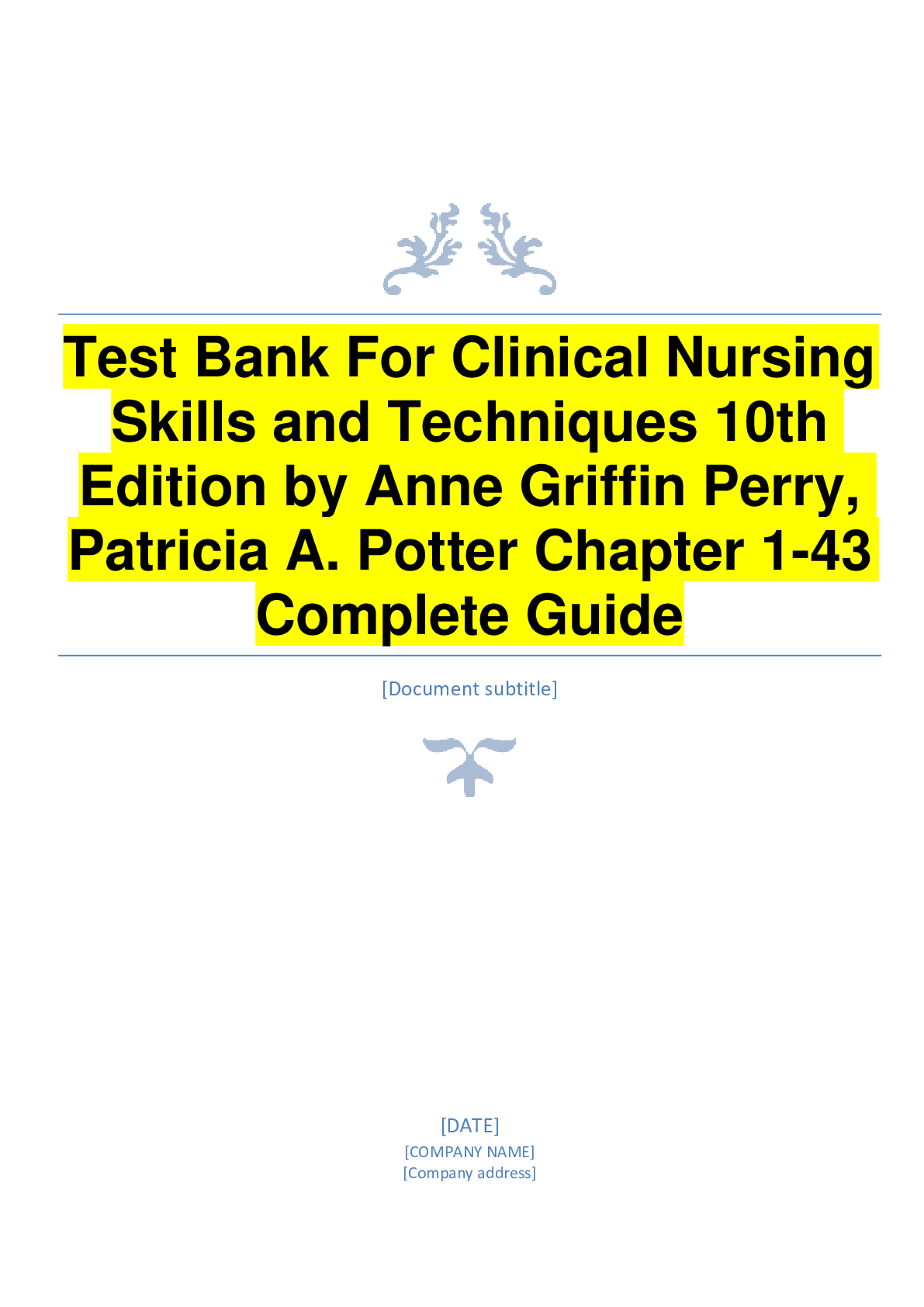
Reviews( 0 )
Document information
Connected school, study & course
About the document
Uploaded On
Nov 30, 2022
Number of pages
606
Written in
Additional information
This document has been written for:
Uploaded
Nov 30, 2022
Downloads
0
Views
40

.png)
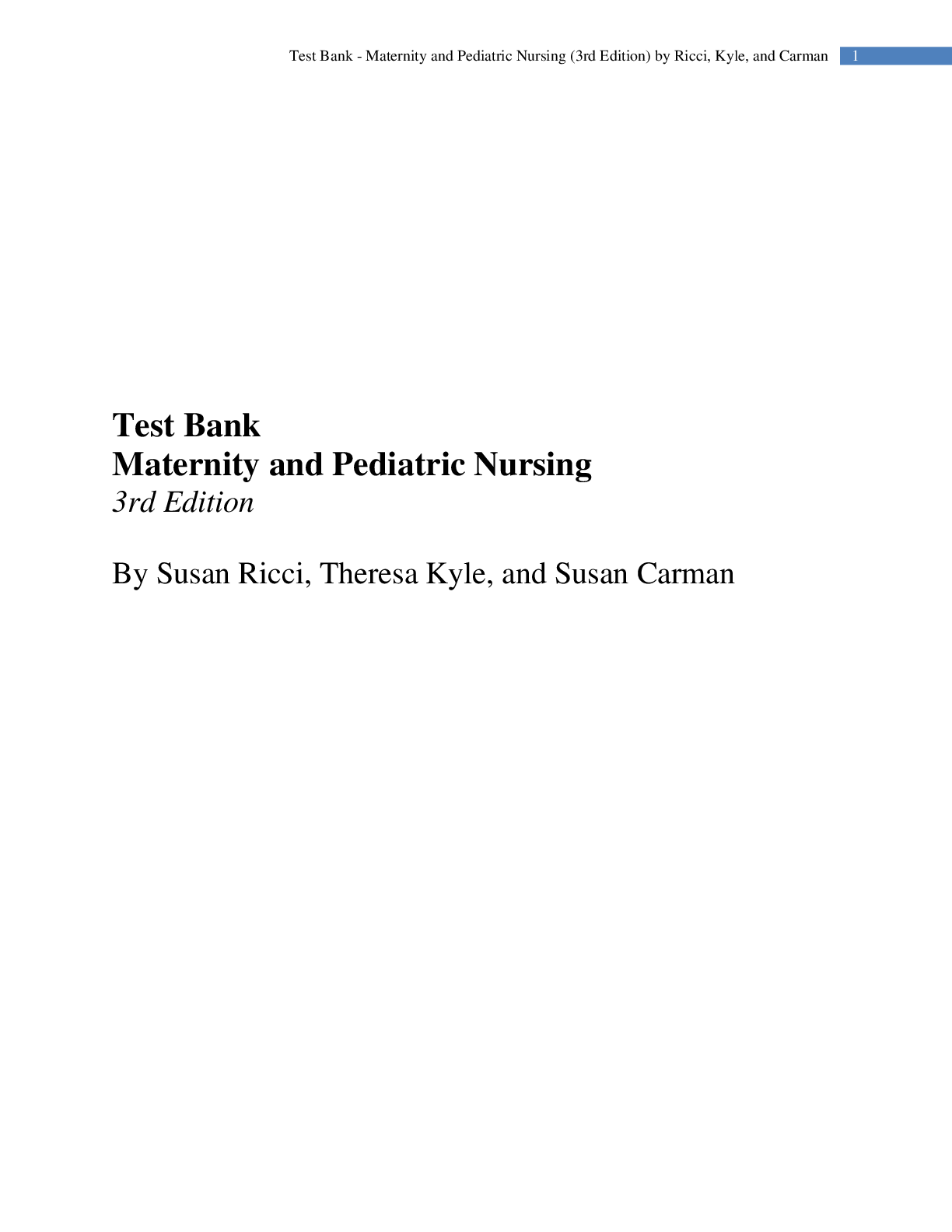

.png)
